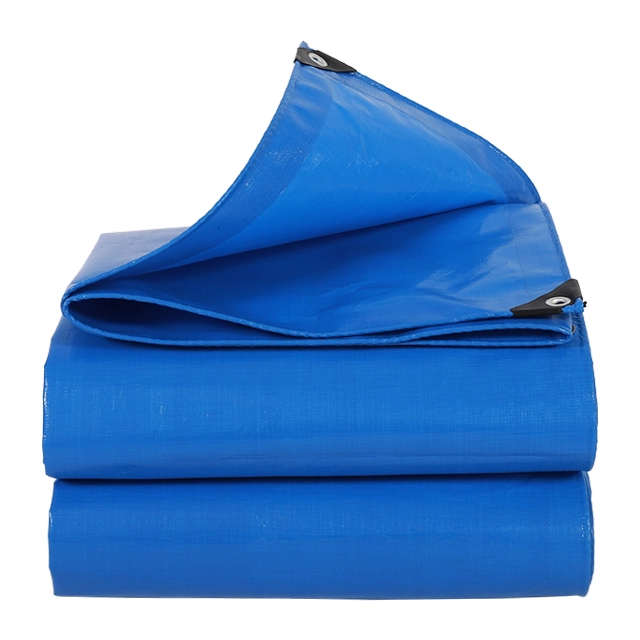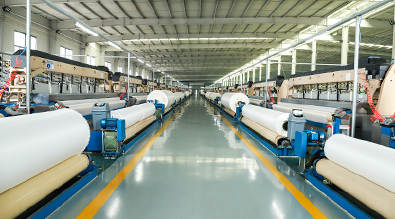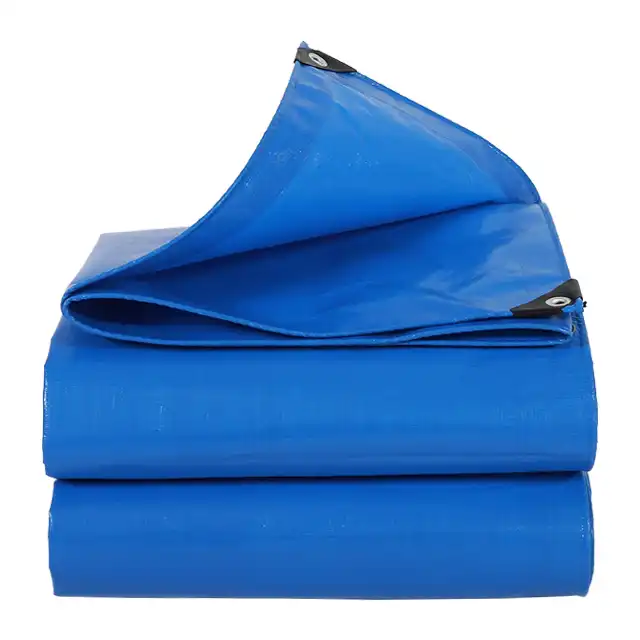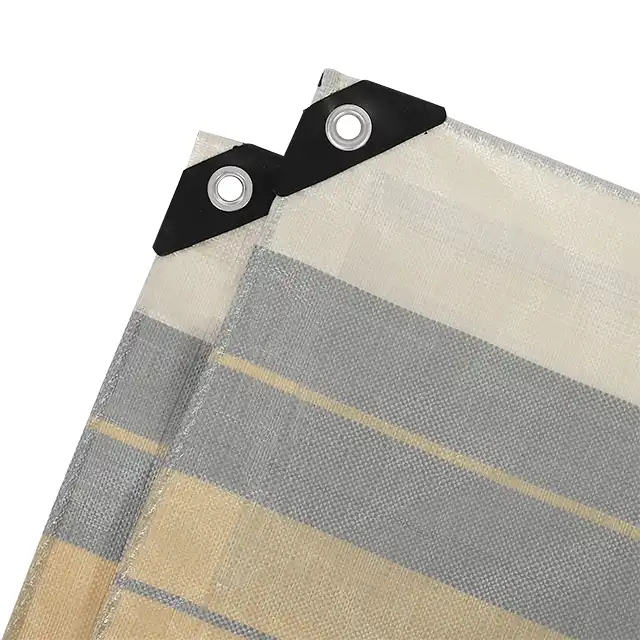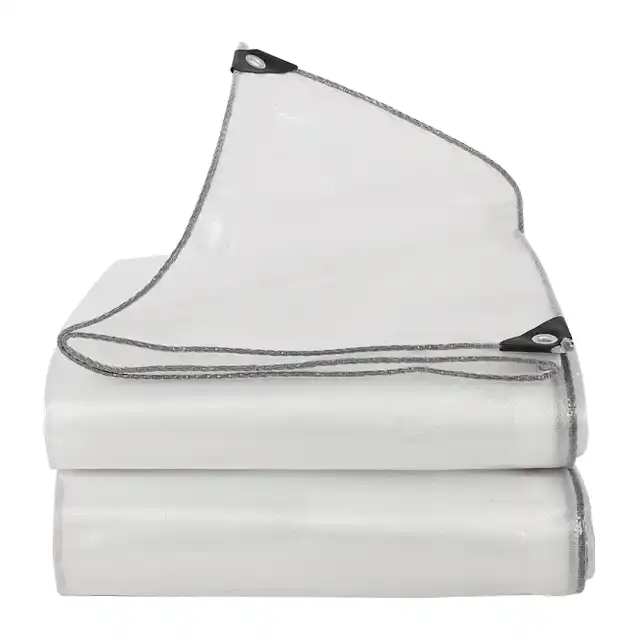Best PE Woven Fabrics for Industrial Packaging Applications
 In today's competitive industrial landscape, packaging solutions must balance durability, cost-effectiveness, and versatility. Among the most innovative and reliable materials available, PE woven fabrics stand out as an exceptional choice for industrial packaging applications. These high-performance fabrics combine the strength of high-density polyethylene (HDPE) woven structures with protective lamination, creating a material that excels in preserving and protecting goods across diverse industries. From manufacturing to agriculture, logistics to construction, PE woven fabrics offer unparalleled protection against moisture, dust, UV radiation, and physical damage, making them indispensable for businesses seeking optimal packaging solutions that enhance product integrity throughout the supply chain.
In today's competitive industrial landscape, packaging solutions must balance durability, cost-effectiveness, and versatility. Among the most innovative and reliable materials available, PE woven fabrics stand out as an exceptional choice for industrial packaging applications. These high-performance fabrics combine the strength of high-density polyethylene (HDPE) woven structures with protective lamination, creating a material that excels in preserving and protecting goods across diverse industries. From manufacturing to agriculture, logistics to construction, PE woven fabrics offer unparalleled protection against moisture, dust, UV radiation, and physical damage, making them indispensable for businesses seeking optimal packaging solutions that enhance product integrity throughout the supply chain.
Superior Quality Characteristics of PE Woven Fabrics
Advanced Manufacturing Processes
The exceptional performance of PE woven fabrics begins with sophisticated manufacturing processes that ensure consistent quality. The production typically starts with high-tech extruding machines that create yarns ranging from 400D to 2500D thickness, providing the foundation for robust fabric construction. These yarns are then precisely woven using advanced water-jet looms, creating a tight, uniform mesh structure that becomes the backbone of the material's strength. The weaving process is carefully controlled to achieve optimal thread count—typically between 10×10 to 14×14 mesh count—ensuring the perfect balance between flexibility and strength. Following weaving, the pe woven fabric undergoes a specialized coating process where layers of low-density polyethylene (LDPE) are applied to both sides, effectively sealing the material against moisture while enhancing its tear resistance and durability. This multi-stage manufacturing approach creates a pe woven fabric that consistently delivers superior performance across numerous industrial applications.
Material Composition Benefits
The unique composition of PE woven fabrics delivers significant advantages over alternative packaging materials. At their core, these fabrics utilize high-density polyethylene (HDPE) fibers, known for their exceptional tensile strength and resistance to tearing. The tightly woven structure of these fibers creates a robust foundation that can withstand substantial physical stress without compromising the fabric's integrity. When laminated with LDPE coating on both sides, the pe woven fabric achieves 100% waterproof capability while maintaining impressive flexibility. This composition also contributes to the material's remarkable chemical resistance, protecting contents from acids, alkalis, and other potentially damaging substances commonly encountered in industrial environments. Additionally, the inclusion of UV inhibitors in premium pe woven fabric formulations—with treatments ranging from 1% to 7%—significantly extends the material's service life when exposed to harsh sunlight. The environmentally friendly nature of polyethylene also makes these fabrics a sustainable choice, as they can be effectively recycled at the end of their useful life, minimizing environmental impact while maximizing utility throughout the supply chain.
Customization Capabilities
One of the most significant advantages of PE woven fabrics is their exceptional adaptability to specific application requirements. These materials can be manufactured in various weights, ranging from lightweight 65gsm options suitable for indoor applications to heavyweight 280gsm variants designed for the most demanding outdoor environments. The pe woven fabric can be produced in virtually any color, allowing for brand-specific packaging solutions or color-coding systems that enhance logistics efficiency. Size customization represents another critical advantage, with roll widths up to an impressive 5.1 meters available without seams—a feature that significantly reduces weak points in packaging applications. Custom printing capabilities allow for brand logos, handling instructions, or product information to be directly incorporated into the packaging material. Moreover, specialized features such as anti-static properties, flame-retardant treatments, or enhanced UV protection can be integrated during manufacturing, tailoring the pe woven fabric precisely to the end-user's requirements. This flexibility makes PE woven fabrics an ideal solution for companies seeking packaging materials that address their unique operational challenges without compromise.
Performance Advantages in Industrial Applications
Exceptional Durability Features
PE woven fabrics have established themselves as the premier choice for industrial packaging largely due to their outstanding durability characteristics. The combination of high-density polyethylene fibers and protective lamination creates a material capable of withstanding severe physical stress without tearing or puncturing. This exceptional tear resistance is critical in industrial environments where packaging materials routinely encounter sharp edges, rough handling, and heavy loads. The pe woven fabric maintains its structural integrity even under substantial tension, preventing rips from propagating and compromising package contents. Additionally, these materials demonstrate remarkable resistance to repeated folding and unfolding, maintaining their protective properties throughout multiple uses—a significant advantage over single-use packaging alternatives. Their arctic flexibility allows them to perform reliably even in extreme cold temperatures where many other materials become brittle and prone to failure. The shrink-proof nature of PE woven fabrics ensures dimensional stability regardless of environmental conditions, while their anti-corrosion properties protect both the packaging material itself and the contents within from chemical degradation. These combined durability features translate to longer service life, reduced replacement costs, and superior protection for packaged goods throughout complex industrial supply chains.
Environmental Protection Capabilities
In increasingly unpredictable global climate conditions, PE woven fabrics excel at shielding products from environmental challenges that could otherwise cause significant damage. Their 100% waterproof construction provides complete protection against moisture infiltration, preventing water damage, mold growth, and corrosion that could compromise product integrity. This waterproof characteristic makes pe woven fabric particularly valuable for outdoor storage applications or during transportation where exposure to precipitation is unavoidable. Beyond moisture protection, these materials offer excellent dust and dirt exclusion, maintaining product cleanliness in even the most challenging environments. The UV-resistant properties of properly treated pe woven fabric—with UV inhibitors ranging from 1% to 7% depending on application requirements—prevent degradation from extended sun exposure while simultaneously protecting package contents from harmful ultraviolet radiation that could cause fading, embrittlement, or other forms of photodegradation. Temperature stabilization represents another significant benefit, as the material's insulative properties help moderate extreme temperature fluctuations that could otherwise damage sensitive goods. These comprehensive environmental protection capabilities ensure that products arrive at their destination in optimal condition regardless of the challenges encountered during storage or transit.
Cost-Efficiency Factors
The economic advantages of PE woven fabrics extend far beyond their initial purchase price, making them an exceptionally cost-effective choice for industrial packaging applications. Their remarkable durability translates directly to reduced replacement frequency, lowering the total cost of ownership compared to less robust alternatives. The lightweight nature of pe woven fabric—ranging from 65gsm to 280gsm depending on the specific variant—reduces shipping weight when compared to traditional packaging materials like wooden crates or metal containers, potentially generating significant freight cost savings across large shipment volumes. Their space-efficient storage characteristics further enhance operational economics, as folded pe woven fabric occupies minimal warehouse space when not in use. The material's reusability for multiple shipping cycles dramatically improves its economic profile, particularly for companies with closed-loop supply chains or return logistics programs. Additionally, the modular nature of these packaging solutions allows businesses to purchase precisely the protection level needed for specific applications rather than over-engineering packaging for all scenarios. When considering potential product damage rates, the superior protection offered by pe woven fabric often results in lower insurance claims, reduced customer returns, and enhanced brand reputation—factors that significantly impact bottom-line profitability. This comprehensive economic equation makes PE woven fabrics not merely a packaging expense but rather a strategic investment in operational efficiency and product protection.
Industry-Specific Implementation Strategies
Logistics and Transportation Solutions
In the demanding world of logistics and transportation, PE woven fabrics have revolutionized the protection of goods in transit. These materials excel as truck covers, providing weatherproof protection for goods transported in open vehicles while withstanding the significant air pressure and mechanical stress encountered at highway speeds. The pe woven fabric's tear resistance prevents small damages from expanding during transit, while its waterproof characteristics ensure cargo remains dry even during severe weather conditions. For containerized shipping, these materials serve as excellent void fill solutions, stabilizing partial loads and preventing movement that could cause damage. Their lightweight nature contributes to fuel efficiency compared to heavier protective materials, while their flexibility allows for rapid deployment and removal during loading and unloading operations—critical factors in time-sensitive logistics operations. The customizable dimensions of pe woven fabric, available in widths up to 5.1 meters without seams, allow for precise fitting to specific transportation equipment, eliminating waste and maximizing protection. For temperature-sensitive goods, reflective PE woven fabrics can help moderate temperature extremes, providing an additional layer of protection for perishable items. These versatile materials also excel in intermodal transportation scenarios, maintaining their protective properties whether goods are moved by truck, rail, ship, or air—ensuring consistent protection throughout complex supply chains that utilize multiple transportation methods.
Agricultural Application Advantages
The agricultural sector has embraced PE woven fabrics for numerous applications that enhance productivity and protect valuable resources. In greenhouse construction, these materials provide ideal light diffusion while maintaining internal temperature stability and preventing pest infiltration. For harvest storage, pe woven fabric creates effective temporary storage solutions that protect crops from moisture, dust, and UV damage during peak harvest periods when permanent storage may be insufficient. The material's waterproof characteristics make it exceptionally valuable for irrigation applications, with PE hoses delivering water efficiently while minimizing losses through leakage. In aquaculture operations, impermeable tarps created from pe woven fabric establish controlled environments for fish farming, supporting sustainable protein production with minimal environmental impact. For orchard management, rain covers manufactured from these materials protect ripening fruit from excessive precipitation that could cause splitting or disease development, while simultaneously providing some degree of hail protection. The material's chemical resistance proves valuable when storing agricultural chemicals, fertilizers, and fuels, preventing leakage that could cause environmental contamination. Additionally, the UV stability of properly treated pe woven fabric ensures extended service life even under constant sun exposure—a critical factor in agricultural applications where materials are typically deployed outdoors for extended periods. These versatile applications demonstrate why PE woven fabrics have become indispensable tools for modern agricultural operations seeking to maximize productivity while minimizing resource losses.
Construction and Manufacturing Implementations
In construction and manufacturing environments, PE woven fabrics provide versatile solutions for numerous protection and containment challenges. On construction sites, these materials excel as temporary weather barriers, protecting work areas, materials, and equipment from rain, snow, and wind during project phases when permanent structures aren't yet weather-tight. The pe woven fabric's durability allows it to withstand the rough handling typical of construction environments, while its waterproof properties prevent moisture damage to sensitive building materials. For concrete curing applications, these materials create ideal moisture retention environments that optimize strength development while preventing premature drying that could compromise structural integrity. In manufacturing facilities, PE woven fabrics serve as exceptional dust containment systems during renovation or installation projects, preventing particulate contamination of sensitive processes or equipment. Their fire-resistant variants provide an additional safety layer in environments where hot work or flammable materials present ignition risks. The material's chemical resistance makes pe woven fabric particularly valuable when containing or storing industrial chemicals, preventing spills that could create workplace hazards or environmental compliance issues. For equipment protection during manufacturing process transitions or facility relocations, these materials provide cost-effective dust and moisture barriers that prevent damage to valuable production assets. The combination of strength, chemical resistance, and environmental protection capabilities makes PE woven fabrics an indispensable resource for construction and manufacturing operations seeking to protect assets and maintain workplace safety while optimizing project timelines and budgetary efficiency.
Conclusion
PE woven fabrics represent the pinnacle of industrial packaging solutions, delivering unmatched protection through their exceptional durability, complete waterproofing, and customizable specifications. With advanced manufacturing capabilities, premium materials, and versatile applications across logistics, agriculture, and construction industries, these fabrics provide the optimal balance of performance and cost-efficiency that today's businesses demand.
For over 20 years, Linyi Shengde Plastic Co., Ltd. has pioneered superior PE woven fabric solutions through unwavering commitment to quality, innovation, and customer satisfaction. Our ISO 9001:2015 certified processes, cutting-edge research team, and customization capabilities ensure we deliver products perfectly tailored to your unique requirements. Ready to transform your industrial packaging performance? Contact our experts today at info@shengdetarp.com to discover how our solutions can elevate your operations.
References
1. Johnson, M. R., & Wilson, K. L. (2023). Advancements in Polyethylene Woven Fabrics for Industrial Applications. Journal of Packaging Technology, 45(3), 112-128.
2. Zhang, H., & Thompson, S. (2022). Comparative Analysis of Modern Industrial Packaging Materials: Focus on PE Woven Fabrics. International Journal of Supply Chain Management, 17(2), 89-104.
3. Patel, R. V., & Nakamura, T. (2023). Environmental Impact Assessment of Recyclable Packaging Materials in Global Supply Chains. Sustainable Materials Research, 31(4), 215-229.
4. Rodriguez, C., & Lee, S. M. (2024). Cost-Benefit Analysis of High-Performance Packaging Solutions in Manufacturing Industries. Industrial Economics Review, 19(1), 64-83.
5. Wang, L., & Smith, J. D. (2023). Weather Resistance Properties of Polyethylene Fabrics for Outdoor Applications. Journal of Materials Performance, 28(5), 173-187.
6. Miller, A. B., & Chen, Y. (2024). Innovation Trends in Flexible Packaging: A Focus on Woven Polyethylene Technologies. Future Materials & Design, 12(2), 201-216.
